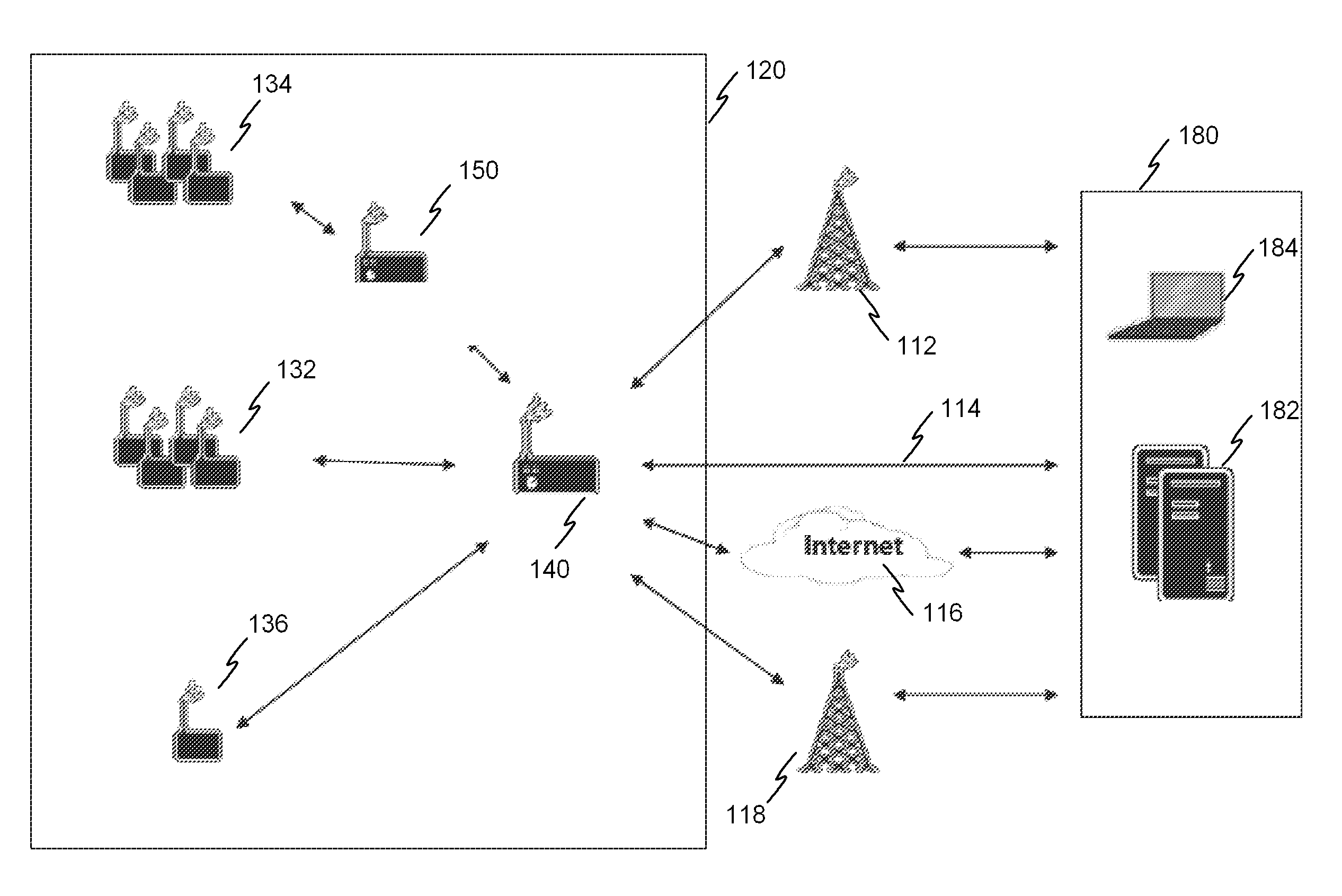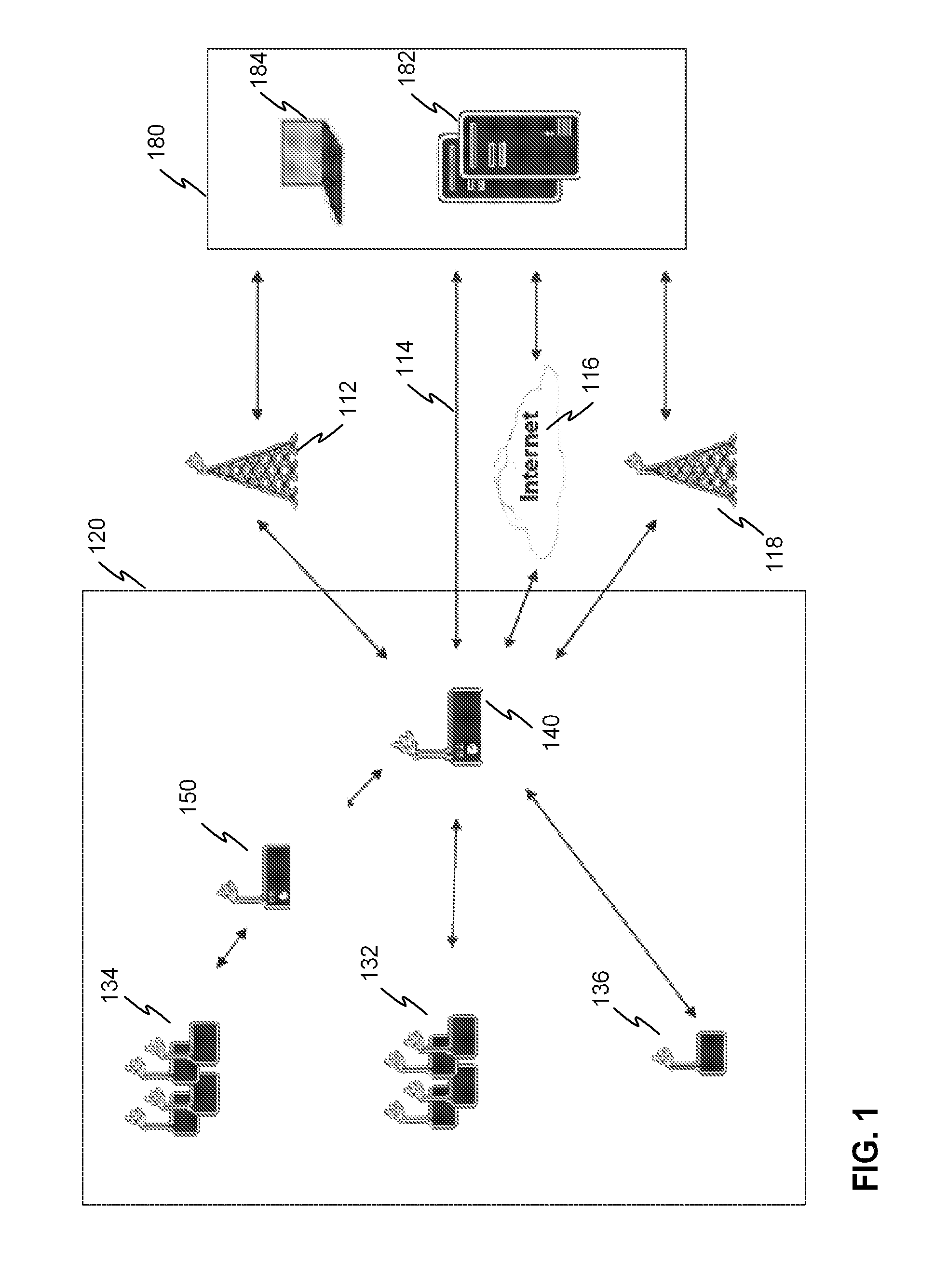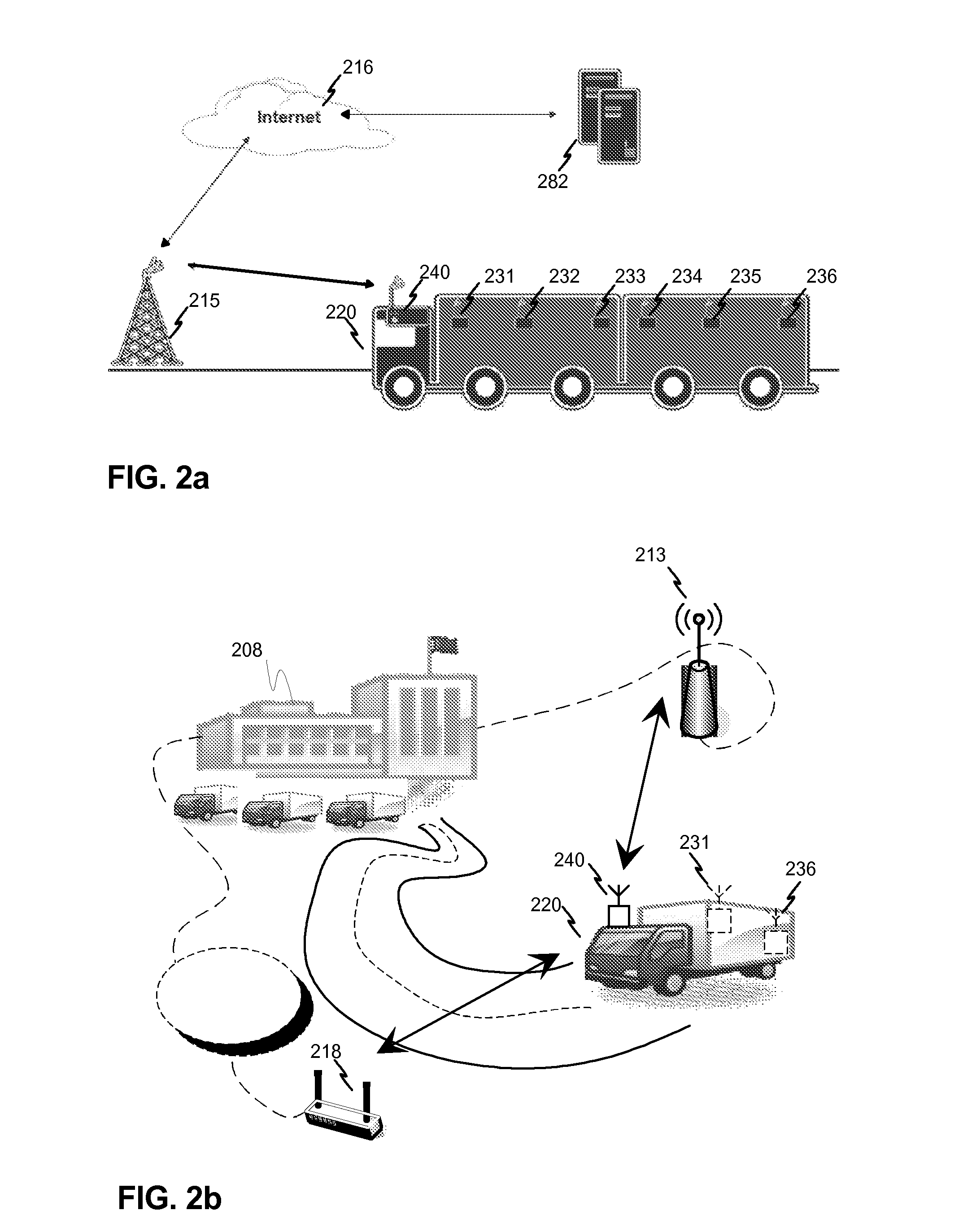Method, system and devices for data acquisition
a data acquisition and data technology, applied in the field of data acquisition, can solve the problems of difficult implementation of requirements in a single generic product, short response time in any such communication, and limited communication distance of passive tags
- Summary
- Abstract
- Description
- Claims
- Application Information
AI Technical Summary
Benefits of technology
Problems solved by technology
Method used
Image
Examples
Embodiment Construction
[0058]FIG. 1 illustrates an exemplary embodiment of a system according to the invention. The system has a plurality of RFID devices such as RFID devices 132-136. The RFID devices communicate with a master device 140 and / or a router 150 of the system.
[0059]The system has a first group 132 of RFID devices which are located at such a distance from the master device that a normal transmission power of the RFID devices is sufficient for the communications with the master device.
[0060]The system also has a second group 134 of RFID devices which are located at such a distance that the normal transmission power of the RFID devices is not sufficient for the communications directly with the master device 140. For the communications the system also has a router device 150 which is located between the locations of the group 134 and the master device 140. The purpose of the router is to collect data from the group 134 of RFID devices and forward the data to the master device. The distance betwee...
PUM
 Login to View More
Login to View More Abstract
Description
Claims
Application Information
 Login to View More
Login to View More - R&D
- Intellectual Property
- Life Sciences
- Materials
- Tech Scout
- Unparalleled Data Quality
- Higher Quality Content
- 60% Fewer Hallucinations
Browse by: Latest US Patents, China's latest patents, Technical Efficacy Thesaurus, Application Domain, Technology Topic, Popular Technical Reports.
© 2025 PatSnap. All rights reserved.Legal|Privacy policy|Modern Slavery Act Transparency Statement|Sitemap|About US| Contact US: help@patsnap.com



